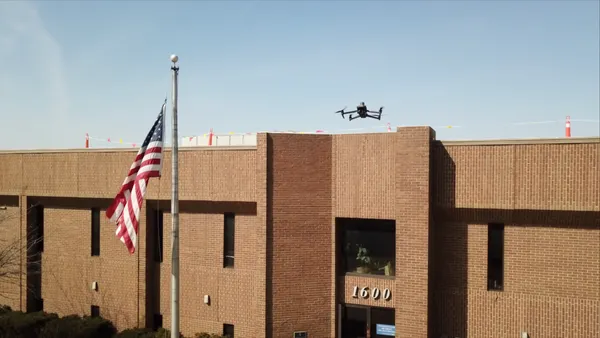Editor's Note: The following is a guest post from Jack Williams, strategic product manager for AI, analytics and interoperability at Hexagon Safety & Infrastructure.
As the COVID-19 pandemic continues to impact worldwide public safety operations, front-line agencies can improve their response, efficiency and worker well-being with a transformative tool: data analytics.
Analytics, or the process of turning raw data into insights, can provide agencies with a real-time view of how the virus is impacting their communities. Those insights can indicate if a community’s COVID-19 curve has flattened, as well as changes in agency demand and resources.
Mining the data
Internal operational data is the basis of an agency’s most illuminating reports. As calls about COVID-19 enter a public safety answering point (PSAP), call-takers can flag those events and enter relevant information into the agency’s computer-aided dispatch (CAD) system. That information can include time of call, address, reported symptoms, responder observations and latest available condition.
Integrating third-party data sets from state, regional, or national health organizations with internal CAD data can help agencies determine trends in positive cases and deaths. Analyzing those trends can help leaders develop plans, from unit coverage and workflows to call-taker workloads.
Identifying community trends
By establishing a normal baseline, agencies can compare the volume of virus-related calls for service against previous days, weeks, months and years. With a combination of internal and external data, agencies can see the frequency of COVID-19-related calls, confirmed cases within a community and hot spots or areas where cases are growing.
Agencies can then share these reports with pertinent personnel, from decision-makers to first responders. If an agency places more units in an area where COVID-19 cases are increasing, it may reduce response times and help responders mentally prepare for a surge in calls and/or how to prepare for a patient with obvious symptoms.
Drilling down on specifics
Agencies seeking to drill down further on hot spots can create heat maps with specific addresses. Map pinpoints can depict precise locations for COVID-19-related calls for service.
CAD data can also be integrated into advanced playback and geospatial analysis functions to provide a visual map-based representation of changes in call frequency and locations over a specified timeframe. This allows agencies to see how the virus is evolving in their communities, including the prevalence of new cases.
For example, the Santa Clara Police Department in California frequently uses data analytics to determine specific trends and their locations. By establishing specified parameters, the agency uses data each week to:
- Compare 2020 total calls and total dispatched calls to the same week in 2019
- Compare call volume by hour to the same week in 2019
- Graphically show/compare 2019 versus 2020 total calls for service by week number
By running these reports, the agency can understand call event type, changes in call volume by hour and total calls for service compared to prior weeks.
A greater understanding of where and when calls for service occur is a useful planning tool. If a higher number of COVID-19 cases are being reported during evening hours in a specific part of a coverage area, agency leaders can use that data to ensure appropriate staffing levels in the PSAP and the field.
Supporting worker well-being
During the ongoing pandemic, call-takers and first responders — particularly in hard-hit areas — are working longer hours with fewer days off. While data can help these workers take care of their communities, it can also help them take care of themselves.
Informed scheduling helps reduce call-taker and responder stress, burnout, and poor decision-making. Having truth in data can help determine employee schedules and/or give agency leaders the information they need to seek additional resources.
Pandemics are unique events, but cities regularly face threats to public safety. Natural disasters and incidents of terror and mass violence are becoming more frequent worldwide. The ability to quickly analyze data to identify threats and mitigate risks improves resource management, operational efficiency and staff well-being.
The ultimate benefit of analytics, however, is greater situational awareness across an agency. Data provides a level of insight and preparedness that can’t be gleaned from a drill or mock scenario.
Government and agency leaders committed to achieving a safe city already know how valuable historical, real-time and forecast reporting can be when planning for the worst-case scenario. The reason why is simple: When lives and property are threatened in a rapidly evolving scenario, data doesn’t change.
Data is unwavering and represents absolute truth, but only analytics can illuminate that truth.
To keep up with all of our coverage on how the new coronavirus is impacting U.S. cities, visit our daily tracker.









